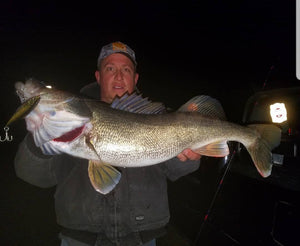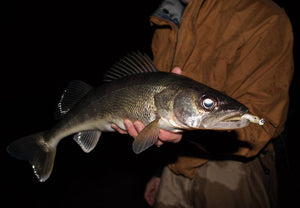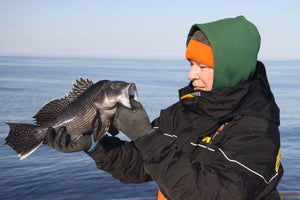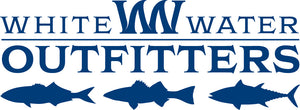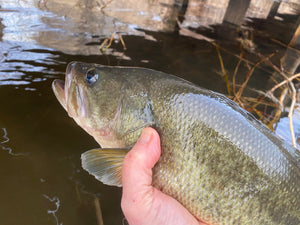Shinnecock Bay's Skinny Water Summertime Fluke
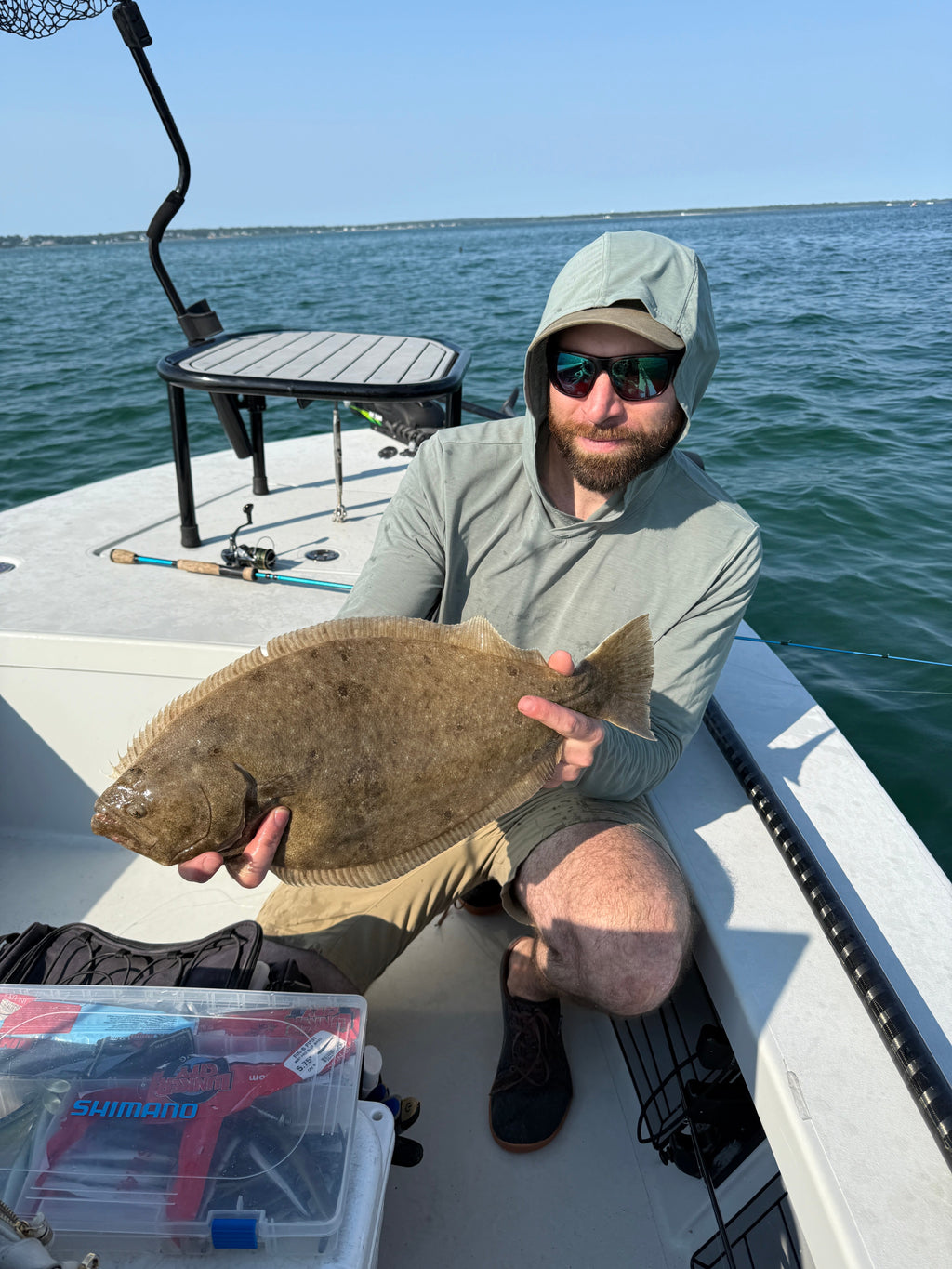
For local anglers pursuing summertime fluke from late July through September, conventional wisdom holds that the best catches are likely to come from deeper waters near inlet mouths or in nearshore ocean waters ranging from 40- to about 60-feet deep - and possibly deeper during significant heat waves. One exception to that rule, however, is the mid-to late-summer fluke action that for several consecutive years now has developed across Shinnecock Bay’s shallow flats. Here, even during prolonged heat waves, anglers have found a significant number of legal-sized summer flatties willing to smack lightweight offerings.
The bite has been pleasantly reliable, fairly easy to find and time, and is certainly worth investigating if the idea of gathering some tasty flatfish fillets just minutes from your dock or launch site piques your curiosity. Generally, the best of this action occurs from early August through September and sets up in two primary areas: the East Cut and west of Ponquogue Bridge. In both of these stretches you’ll likely do best by drifting over various ledges and drains in 4- to 10-foot depths. To be sure, you’ll play catch and release with plenty of shorts here on almost any trip, but enough keepers are culled that the chances of taking home a couple for dinner are fairly good. That’s especially so if you work these stretches at the start or end of incoming water.

Spro Squidtail jigs are another great choice for summer fluke, especially when fishing under heavily overcast skies. Photo courtesy of Spro. USA
The key to really making the most of this bite is to drift while bouncing a single one- or two-ounce OG Jigs Big Eye Bucktail, Spro Prime or Spro Squidtail jig along the bottom using lightweight spinning or conventional gear. For spinning, a Jigging World Night Ranger JW-NR721-MH, matched to a size 3000 Shimano Stradic reel, is a great combo. If you prefer the conventional route, we suggest a Shimano Tranx 150 or Tranx 200 filled with 10-20 pound-test braid and teamed with 6-foot, 6-inch, medium power, PC66MF St. Croix Premier casting rod.
With either of these setups you should be able to drop down to even smaller bucktails in the 1/2- to ¾-ounce size on the slowest stages of the tide, which may even help work up a few bites on slacking water. Naturally, you’ll want to tip your bucktail to give it an enticing action and lifelike scent. A simple pennant of squid impaled once through the wide end or a spearing hooked through the eyes will suffice, but Berkley Gulp!® can often work even better and is less messy to use. Favorite options this time of year include four- to five-inch Sardine or Pink Shine Saltwater Jigging Grubs, white or chartreuse Swimming Mullets, and white or pink shine Saltwater Jerk Shads. Four-inch Saltwater Shrimp are another go-to option and can really provide an edge if the fish are in a finicky mood. With any of these trailers, expect to also entice a fair number of sea robins, along with an occasional porgy, cocktail blue and, perhaps, a sea bass or school weakfish.
 August and September see some solid action with later summer fluke on Shinnecock Bay’s shallow flats. Adam brown shows off a nice summer flattie that slammed a pink and white Spro Prime Bucktail. Photo by Felicia Scocozza.
August and September see some solid action with later summer fluke on Shinnecock Bay’s shallow flats. Adam brown shows off a nice summer flattie that slammed a pink and white Spro Prime Bucktail. Photo by Felicia Scocozza.
In terms of working your bucktail along the bottom for this hot weather bite, keep it moving. Short two- to six-inch lifts of the rod are perfect for imparting the relentless action that fluke often crave. Some strikes will be savage, prompting an involuntary hook set. Others can be gentle, calling for a slow-lift hookset - especially if you simply feel a little added weight at the end of the line.
If you’ve yet to try late-summer light-tackle bucktailing for fluke, be warned it can be incredibly addicting. Not only does this easy-to-learn method excel in shallow water environments, it is also perfect for smaller hands on family outings and gives the fish – especially keepers – a chance to show off their true fighting ability. Additionally, a bucktail approach allows for easy releases because most species of fish that smack these tempting lures rarely swallow them far past their jaws.
Among other points you’ll want to keep in mind when heading out, bringing along a large landing net is near the top of the list because any keeper-size fluke caught on light-tackle these days is likely too heavy to safely lift over the gunwale without a little help. Ranger makes some especially good landing nets, and we carry them at the shop.
 Lightweight OG Jigs Big Eye Bucktails and Spro Prime bucktails work great. White scores well in clear water while pink gets the nod in discolored areas. This pink over white Spro allows anglers to hedge their bets. Photo: www.OutdoorTom.com.
Lightweight OG Jigs Big Eye Bucktails and Spro Prime bucktails work great. White scores well in clear water while pink gets the nod in discolored areas. This pink over white Spro allows anglers to hedge their bets. Photo: www.OutdoorTom.com.
Know also that the size limit for fluke in New York State waters this year changes from 19 inches to 19.5 inches on August 1 but the possession limit remains at three per angler. The 2025 fluke season runs through October 15. Keep in mind, too, that Moriches Bay can set up with a decent run this time of year, too. Investigate the waters around Birds Island and in the southeastern part of the bay and you should find some productive stretches. In both Moriches and Shinnecock Bay, the fluke bite usually intensifies under overcast skies.
Lastly, make sure to treat the shorts gently when releasing them. After a few years of lackluster spawns, there seems to be a decent crop of toothed summer flounder on the rise. Treating them well during your brief encounters is one way to help ensure that catches continue to improve in the years ahead.
- Bryce Poyer

